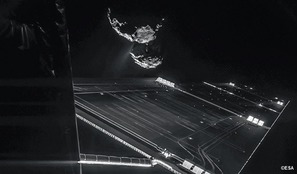Since its creation almost 10 years ago, the Mexican Space Agency has been an important player in consolidating the country’s space sector. Its mission is to use science and space technology to meet the needs of the Mexican population and to promote innovation and the development of the country’s space sector, contributing to the peaceful use of outer space. Here, Carlos Duarte looks at the role the Agency is playing in constructing Mexico’s space sector.
Space activities in Mexico began on 28 December 1957 with the launch of a sounding rocket developed by professors and students of the Universidad Autónoma de San Luis Potosí. These activities stimulated the creation of groups dedicated to experimental rocketry and space activities in several Mexican universities. This enthusiasm led to the creation of the National Commission of Outer Space (Comisión Nacional del Espacio Exterior, CONEE), on 31 August 1962. CONEE was an office of the Secretariat of Communications and Transport (SCT) and was devoted to doing experimental work in rocketry, telecommunications and atmospheric studies from 1962 until November 1977. CONEE´s closure, by Presidential decree, resulted in a lack of coordination of space activities in the country, as these were now performed individually by several Mexican academic organisations, such as the Universidad Nacional Autónoma de México (UNAM), the Instituto Politécnico Nacional, (IPN), the Instituto Nacional de Astrofísica, Óptica y Electrónica (INAOE) and the Centro de Investigación Científica y de Educación Superior de Ensenada (CICESE).
Concurrently, while trying to bring Mexico into the modern technological age, the Mexican government purchased a series of communications satellites to service the country. Initially the Morelos 1 and 2, geostationary satellites operated between 1985 and 1998 to provide telephony, data, and television services, and then Solidaridad 1 and 2 operated from 1997. These satellites were eventually privatised and converted into the Satmex Satellite System. More recently, during the first decade of the 21st century, the Mexican Government acquired the MexSat constellation of geostationary satellites, comprised of the Morelos 3 satellite for fixed communications and the Bicentenario for mobile communications.














